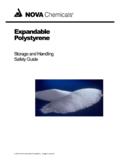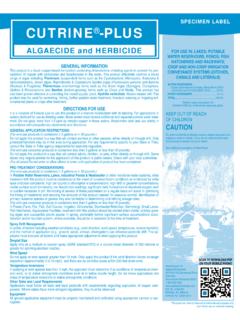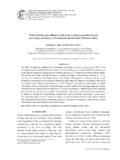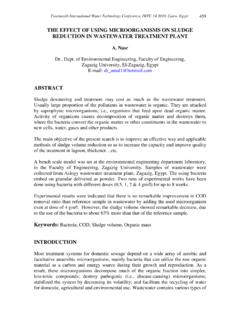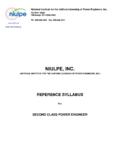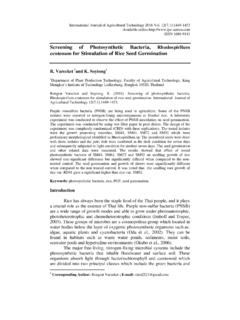Transcription of PRODUCT RISK PROFILE PYGAS (AROMATIC …
1 PRODUCT RISK PROFILE PYGAS (AROMATIC CONCENTRATE/C5) Page 1 of 2 PRODUCT Summary pyrolysis gasoline ( PYGAS ) is an industrial PRODUCT that consists of a mixture of hydrocarbon products, predominantly C5 through C11. NOVA Chemicals PYGAS contains benzene at a concentration of 30 to 50%. PYGAS (also known as Aromatic Concentrate or C5) is a PRODUCT of the ethylene manufacturing process at NOVA Chemicals Joffre, Alberta facility as well as a feedstock for NOVA Chemicals Corunna, Ontario facility.
2 PYGAS production occurs in closed systems and the PRODUCT is transported in bulk by rail to other industrial sites in Canada and in the United States for additional processing. PYGAS is typically stored in bulk storage tanks equipped with floating roofs, or vapours are vented to a vapour combustion unit to reduce emissions. Based on testing of similar materials, this PRODUCT exhibits low acute toxicity by oral, dermal or inhalation routes of exposure. The PRODUCT contains substances, such as benzene, that individually are considered to be more toxic.
3 However, the toxicity of this PRODUCT in repeated exposure is less severe than benzene due to lower individual component concentrations, less component interaction and competitive inhibition. PRODUCT Use Information The primary use of the PYGAS PRODUCT is in the isolation of high purity benzene and other products. It has to be further processed prior to its use as a feedstock for making other industrial chemicals and plastics. There are no known consumer uses for NOVA Chemicals PYGAS . Human Exposure Occupational exposure to PYGAS is minimal under normal operating conditions because PYGAS is used in a closed system process unit.
4 There are limited circumstances where occupational exposure could occur, accidental releases, storage, handling, sampling operations, and fugitive emissions from process equipment (such as pumps or valves). Permitted occupational exposure to the most toxic component, benzene, is limited to parts per million (ppm) exposure averaged over 8-hours of work or a 40-hour work week in most of Canada and in the United States. Workplace air quality measurements taken by NOVA Chemicals in typical industrial operations indicate that good equipment design, maintenance and good operating practices and procedures minimize exposure to levels well below ppm.
5 The American Conference of Governmental industrial Hygienists (ACGIH) has also established workplace biological exposure indices (BEI) for benzene as well as other components found in this PRODUCT . General population exposure to PYGAS from industrial facilities is limited because industrial air emissions are subject to federal and provincial/state environmental regulations. These regulations cover not only emissions of benzene, but also emissions of other volatile organic compounds.
6 Benzene exposure to the general population from production, transportation and use of PYGAS is very low compared to exposure due to inhalation of contaminated ambient air, particularly in high motor vehicle traffic areas and around gasoline service stations or in a cigarette smoke environment. The Occupational Safety and Health Administration (OSHA) Benzene Standard, the ACGIH values for occupational exposure and Alberta s Ambient Air Quality Objectives and Guidelines apply to this PRODUCT . OSHA and ACGIH have also established guidelines for other components ( toluene, dicyclopentadiene, styrene, cyclopentadiene) found in this PRODUCT .
7 Health Information Evaluation1 of scientific and health information on this PRODUCT as a whole indicates that PYGAS is considered to have low acute toxicity by oral, dermal or inhalation routes of exposure. In addition, it is unlikely that it would cause significant genetic toxicity. Although this PRODUCT contains a substantial concentration of benzene, a known carcinogen, no genetic damage was induced by oral treatment of rats with a similar mixture that had up to 55% benzene demonstrating the inhibitory effects of other components in the mixture.
8 Repeated dose studies of the PYGAS stream reported skin irritation above ml/kg but no other systemic toxicity occurred in rabbits, and the No-Adverse-Effect Level (NOAEL) was 4869 ppm in rats from inhalation exposure. Benzene is a predominant component of this PRODUCT ; therefore, it is important to address the known health hazards of benzene. As an acute poison, benzene produces narcotic effects: the probable human oral lethal dose would be between 50 to 500 mg/kg (body weight per day).
9 People who inhale benzene vapours over a prolonged period may experience harmful effects in the tissues that form blood cells especially the bone marrow. This can lead to anemia. Also long-term exposure to benzene can cause cancer of the blood-forming organs. Exposure to benzene has been associated with the development of a particular type of leukemia called acute myeloid leukemia (AML). Prolonged exposure of an aging population of workers to benzene can cause myelodysplastic syndrome (MDS) (abnormal growth of red, white or platelet stem cells in the bone marrow).
10 However, as it has been demonstrated in the area of genetic toxicity, the presence of biologically active components blended together can inhibit toxicity inducible by individual components. No significant reproductive effects were reported in multigenerational studies of a similar stream. Developmental effects from components in this PRODUCT occurred primarily at doses that were maternally toxic as well; thus it is not considered to be a developmental toxicant. Environmental Exposure Environmental exposure to PYGAS can occur through accidental spills, fugitive emissions, leakage or release of vapours into the atmosphere during tankage, delivery, or transfer for storage.
